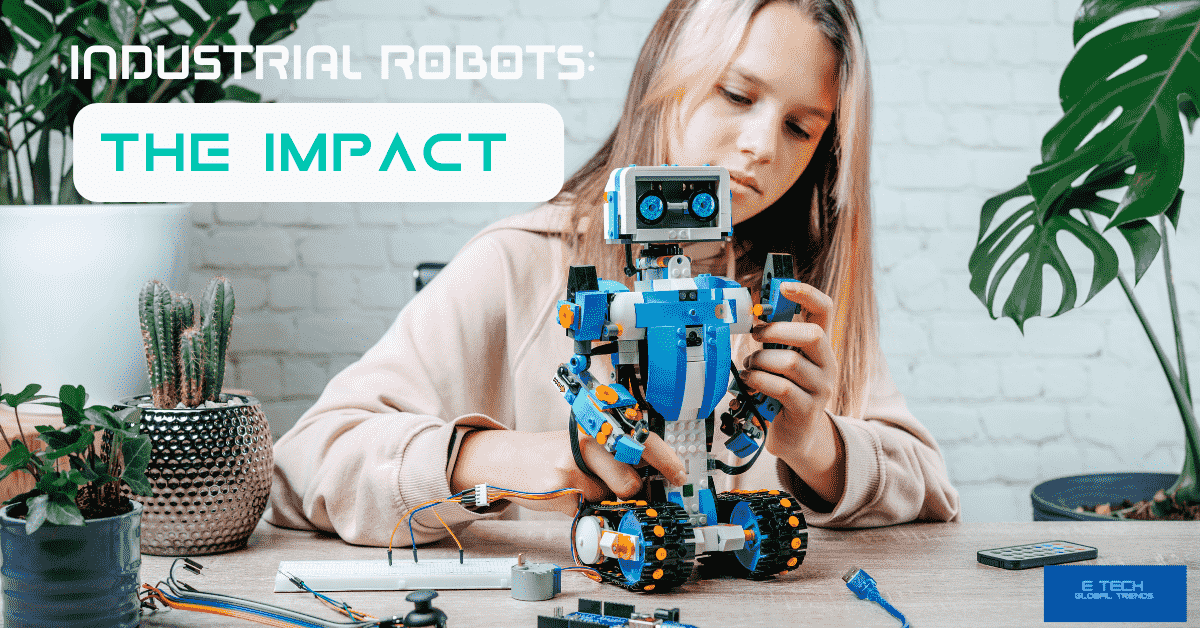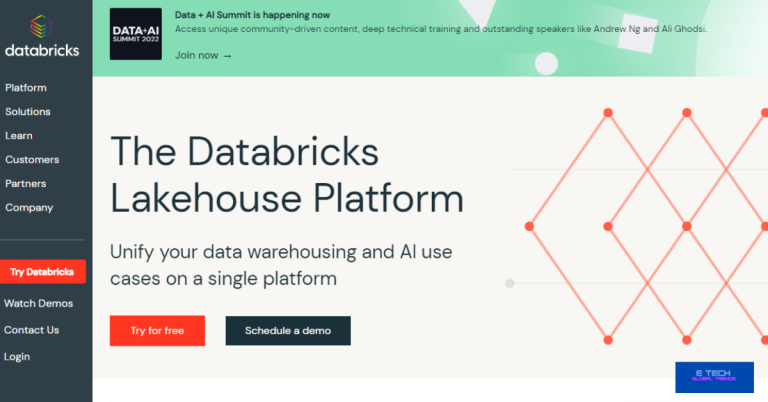Industrial robots: Trends 2022
They are already on our doorstep. The global market for industrial robots grows steadily over the next four years, with market size of around $55 billion in 2020. There are 2.7 million industrial robots in use around the world. sure? are they to lose jobs? no, actually it will not! or what will happen? A recent study says, there is no proper knowledge. and also experience of major manufacturers for industrial robotics operations. therefore the article “Industrial robots: Trends 2022” will make your work. let’s see how it’s going on?
Do industrial robots impact human lifestyle?
It depends on how you define the term “robot” or what kind of robots you’re referring to.
If you mean automatic devices controlled by a computer program, sure, then the answer is YES and more than YES: robots have already changed our society in a significant way, as you stated.
Many drudgery jobs, such as assembling, welding, and painting, replaced by industrial robots.
The lively ones in the shape of humans are not coming anytime soon.
Do AI robots exist?
Not yet, Because AI is not naturally intelligent. the use of AI robots is still improving. Intelligence can define naturally by scientists. As a result, Artificial Intelligence is not based on natural intelligence theories. As a result, AI is not intelligent in and of itself. limiting AI to repetitive tasks and simulated neural networks to pattern recognition.
of course, Both within and outside the industry, AI and robots are a strong combination for automating jobs. In recent years, artificial intelligence (AI) has grown more widespread in robotic systems, offering flexibility and learning capabilities to formerly inflexible applications.
What are the benefits of artificially intelligent robots?
AI is still in its early stages, it is a technology that will transform some manufacturing applications, although it has yet to have many impacts.
4 Artificial Intelligence-Based Robotic Applications: “ Industrial robots: Trends”
There are several major AI deployment options in today’s global manufacturing sector.
- Assembly applications; In robotic assembly applications, AI is the most useful tool. AI can help with real-time course correction when combined with sophisticated vision systems. which is especially useful in complex manufacturing areas like aerospace. When the robot is operating, AI can also use to determine which paths are best for specific processes.
- Customer care service; Customers are now serve by robots in retail stores and hotels all over the world. The majority of these robots equipped with artificial intelligence to communicate with users in a more human manner using natural language processing capabilities. These systems often learn more the more they interact with humans.
- Packaging; Robotic packaging makes use of artificial intelligence to make packaging faster, cheaper, and more precise. AI reduces some of the vibrations produced by robotic systems, making it easier for anyone to install and move them.
- Open source Robotics; Some robotic systems are on the market as open-source AI systems. for instance, Users can teach their robots to perform custom tasks based on their applications. such as small-scale farming, therefore, In the future of AI robots, combining open-source robotics and AI could be a huge trend. Robots are smarter, more accurate, and more profitable when they work together. Although AI is still far from reaching its full potential, robotics will follow suit as AI advances.
What will happen next?
Industrial robots are becoming lighter and more adaptable. and the level of human-machine collaboration is increasing. The human-machine collaboration combines human cognitive abilities with industrial robots. That will be an important future research and development direction for the industry.
As an example, the issuer may have independently developed collaborative robots.
The impact of AI on industrial robotics
Artificial intelligence is integrating with the industrial robot sector. Also noteworthy is the rise of robot intelligence. Industrial robots will become a nexus of cutting-edge technology from a variety of fields. And, as downstream industrial applications and artificial intelligence technologies advance, more complicated application scenarios will emerge.
Is AI part of the robotics industry, or is it a separate field of technology?
AI is a distinct field from robotics, but, like cybernetics, it is sometimes complementary to it.
The process of programming applications to accomplish activities traditionally associated with human intelligence is referred to as artificial intelligence (AI). Many of these duties do not involve the employment of robots.
the tasks handling by the Industrial Robots?
Shall we see more?
Robotics may perform a variety of jobs in a factory. Despite the fact that they might be considered broad automation. That isn’t the case. They are astute in their management of the situation. Manufacturing multi-joint industrial robots are one of their specialties.
In terms of machine functionality, A system-level controller is used to control and manage these robots. These are industrial assets that are reprogrammable and adaptable. In addition, it is used in place of human labor to carry out dangerous and repetitive tasks.
Common uses include packaging, machine tending, material handling, cutting, gluing, welding, and assembling.
Industrial robots have been functioning intelligently with IoT in the background. In the robot age, the industrial internet of things is popular. Further, as companies focus on building a safe environment for workers to cooperate with robots in far less danger, cobots will become more popular.
Within the next decade, it would take a super rise-up?. By 2026, the demand for electrical robots will be comparable to that of automobiles. this is a fair assumption.
the most important robotics trends to watch in 2022?
Robotics is a dynamic field. In just a few decades, robots and as well as automation changed the manufacturing business. this is how the trend is. So it’s critical to keep an eye on what’s next. because this technology will play a critical role in how we do business and live in the future.
Top 7 trends in the industrial robots emerging.
In addition, these trends are to become more visible in 2022 and beyond. read further “Industrial robots: Trends 2022”
01 Smart manufacturer plants:
What is smart manufacturing, and how does it work? Smart machines, automation, and sensors are used to improve traditional production lines in this area.. Smart manufacturing and smart factories are a term that comes up often along with Industry 4.0. Other concepts like advanced robots with autonomous communications, processing big data for demand prediction, 3D printing for prototyping, and iterative design are all a part of smart manufacturing.
02 RaaS:
RaaS is a subscription-based business model. in which corporations may rent robotics. + cloud computing equipment rather than owning them altogether. The two most typical barriers to organizations adopting robotics technology are a high initial investment and a lack of personnel experience. Companies may now profit from innovative robotics technology without the bother of traditional ownership,
thanks to RaaS. RaaS helps small and medium-sized firms to employ robots in their operations since it has more predictable expenses and requires less upfront money to start the production.
03 Self-healing robots:
Some breakthroughs in self-healing technology allow robots to do rudimentary repairs on themselves.
04 Trainer robots:
Training a robot is not the same as teaching a pupil. of course, You must have programming abilities as well as an understanding of robotics. And the other thing is Robots and artificial intelligence do not take over employment. Tasks replace. that’s why you get to know this.”Industrial robots: Trends 2022″
Only a few jobs have a single duty. So, while robots will not completely replace robotic engineers, AI will take care of some of the more mundane and dull aspects of their employment. Human specialists should not be replaced by trainer robots.
05 Delivery robots:
Delivery bots are only prevalent in a few countries, primarily the United States. for instance, They are still making progress around the world. countries in Asia and Europe beginning to adopt this technology. Due to the size of its parcel and food delivery markets. as well as the country’s strong demand for same-day delivery. China expects to lead the market.
The delivery industrial robots market
The growing implementation of delivery robots in industries such as healthcare, hospitality, and food delivery expect to drive the delivery robot market over the forecast period. Customers in the food and hospitality industries are using delivery robots for contactless delivery to local addresses and hotels.
In recent advancements, for example, Domino’s, the world’s largest pizza company, and Noro, the world’s premier self-driving delivery firm, formed a collaboration and started autonomous pizza delivery in Houston, USA, in April 2021. This projection is to boost the size of the worldwide delivery robots market.
06 Warehouse management industrial robots:
This is a wonderful technology now emerging. The best example is Amazon packaging and delivery management.
07 Sustainability improving robotics:
there is a possibility to improve this area.
significant Industrial robots: Trends 2022 trends?
The remark on Automation is fast growing and has finally resulted in the industrial sector being revolutionized. Some of the significant technology disruptive trends that are positively impacting the industrial robotics markets include:
Automation Integration;
With the rising need for automation, industrial verticals are taking significant measures. establish an infrastructure that will facilitate the implementation of the rising demand.
For instance, when the notion of self-driving vehicles becomes a reality. Automobile manufacturers must now supply a cost-effective solution that meets efficiency requirements while also cutting operating costs. However, numerous organizations observe incorporating automation by deploying industrial robots in their operational processes in order to obtain a competitive advantage. (Industrial robots: Trends 2022)
Conclusion
Above all, we keep attention to the realistic industrial robots technology trends, it’s a huge help to make decisions for the business. Robotics automation is not a fashion. It must be a success point of a growing business. Yes or no? Applying unwanted robots in the plant is, of no value.
Read more on Xenobots: self-replicating robots, Business tech trends01







